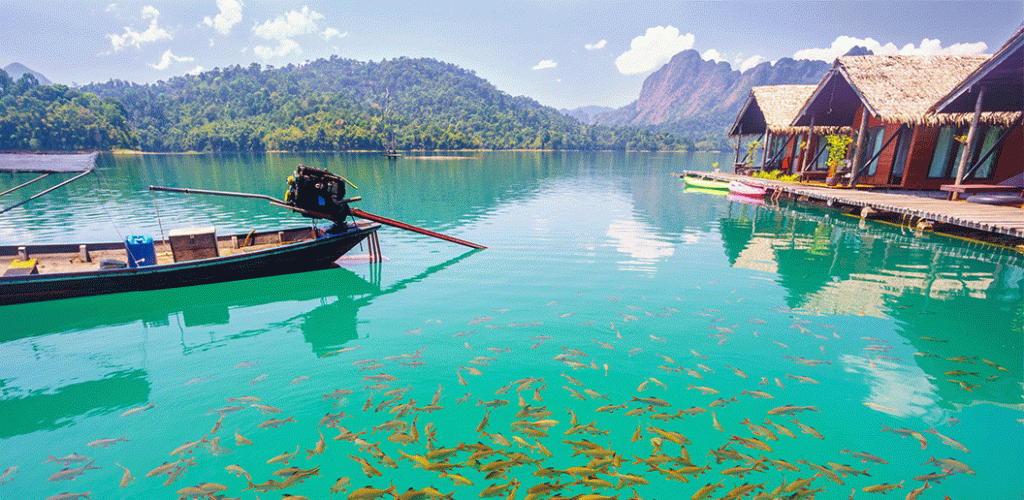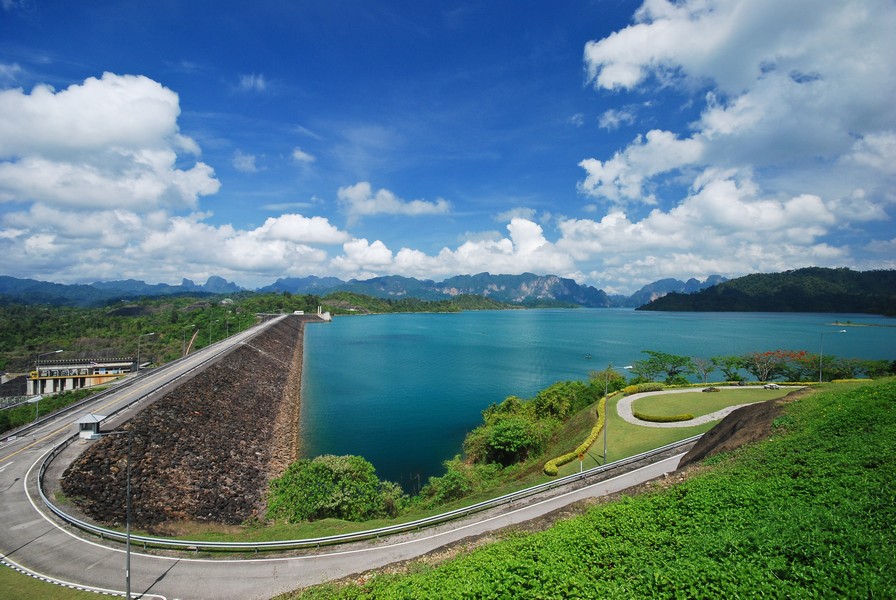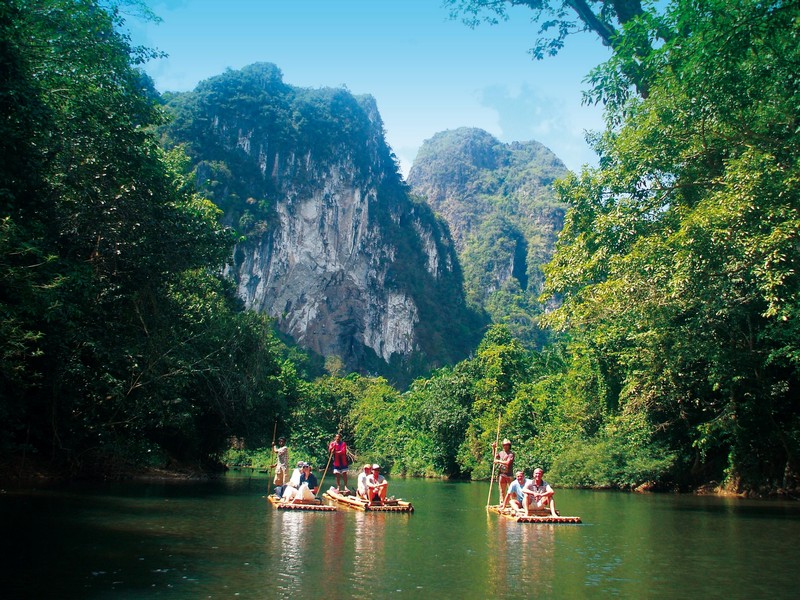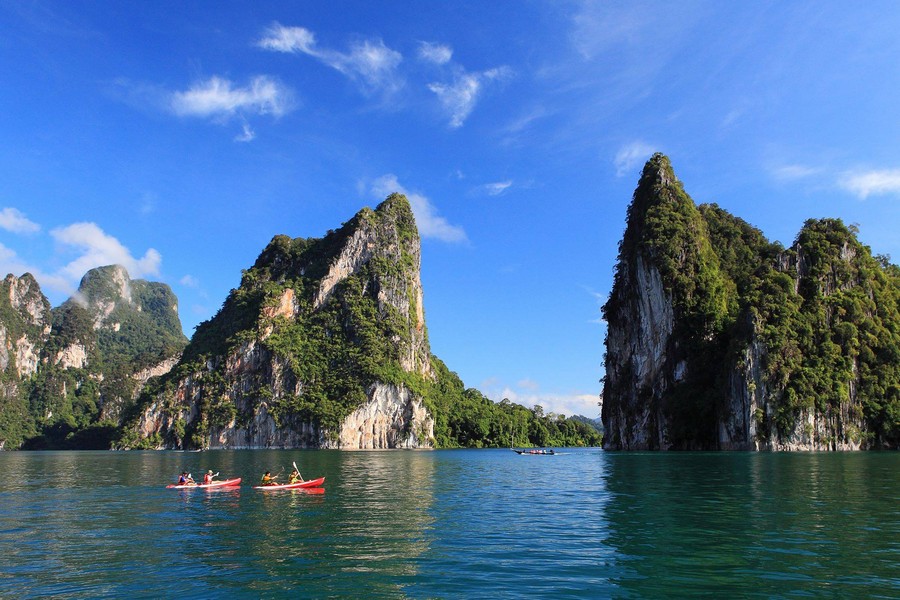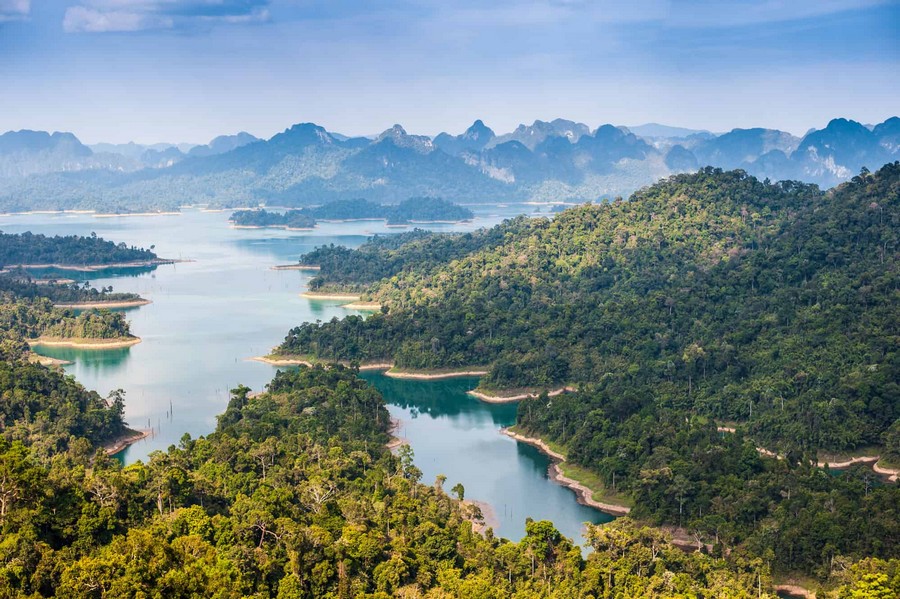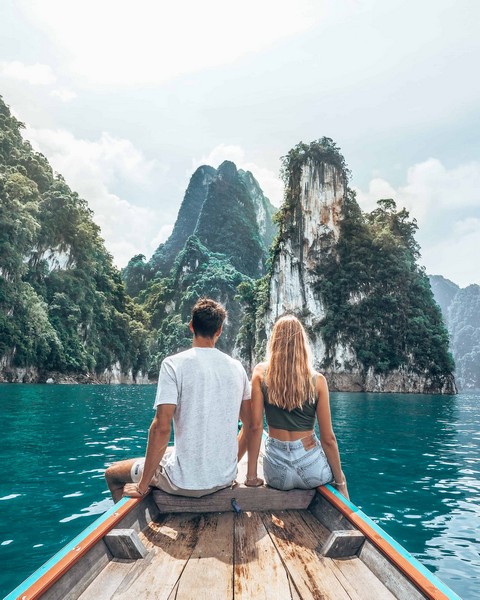When thinking of Thailand, one generally thinks of ocean beaches and sipping on the iconic young coconuts with the small straw hats while overlooking the vastness of the sea. We often tend to overlook however, the fact that Thailand is a region that possesses one of the most ecologically diverse and rich environments in the world, open to the greatest gamma of fauna and flora. A Thai destination that needs to be visited at least once is the naturally beautiful Ratchaprapha, located in the province of Surat Thani.
Ratchaprapha is nothing short of stunning, although not all of it came from the hand of Mother Nature herself. But first, a little history of the area. It’s said that the region of Ratchaprapha was inhabited for the first time over thirty-seven thousand years before Christ. At this juncture, humanity was at the mercy of the Ice Age, and settlers reportedly moved to this land from the island of Borneo, modern-day Malaysia, Indonesia and Singapore.
Much more current, at the dawn of the sixties, this area began to receive more attention from the outside, as a larger and broader road was built to provide easier access. Ratchaprapha’s most famous destination is without a shadow of a doubt Khao Sok National Park. Inaugurated in 1980, it received its name from His Majesty King Bhumibol Adulyadej. Ratchaprapha means “The light of the Kingdom” in Thai, and its beauty is immediately evident upon arrival.
The curious anecdote of this small enclosed paradise is in the fact that the calmness and stillness of its crystalline waters were aided by a man-made construct. Today it is known as the Ratchaprapha Dam and it falls merely four metres short of a hundred imposing metres in length. The dam strategically blocks the Klong Saeng River, which weaves its way across the area. It was done so in foresight by the Electricity Generating Authority of Thailand of Khao Sok holding the largest watershed in Thailand. Completed in 1982, the area has transformed into what is known today as the Cheow Lan Lake.
Visitors to the area have since then grown in number. Still, it is not the type of tourism one usually associates Thailand with. Far are the beach seekers and those who prefer the close quarters of the sea life. Ratchaprapha attracts many geologists, conservationists, biologists, geographers, and botanists because of its incredibly rich diversity of animals, plants, and rock structures.
Because Khao Sok National Park contains Thailand’s largest expansion of virgin forest, the wildlife is something crucial to have a lookout for when you go visit. It is said to be not only older but more diverse than the fauna in the Amazon Rain Forest, an attractive prospect for any person devoted to nature.
An amazing five percent of the world’s species can be found in the area, including the white handed, gibbon, the pig tailed macaque, the Malayan tapir, the muntjak, the Asian elephant, tigers a variety of deer and reptiles, such as the notorious King Cobra and the Reticulated Python as well as the more curious flying lizard. An incredibly large variety of fish can also be found across its stunning coral reef, which is an impressive five times larger than Australia’s Great Barrier Reef. If you rent a kayak or small boat to go through it, you can be assured that beauty will take a new meaning for you.
This takes us to talk about the flora. In incredibly rich soil, grow plenty of vines and plants, as well as exotic fruits such as the mangosteen, the jackfruit, the jujube, rambutan and the infamous durian. However, if we talk about something that stimulates the senses, Ratchaprapha’s most famous plant is the Rafflesia Kerrii. Known as Bua Phut in Thai, it has two unique qualities: First of all, it is the largest flower in the world, at times measuring almost a metre in diameter. Secondly and more notoriously, the Rafflesia is probably the plant with the most terrible and horrid smell in the world, as it exudes a stench of rotten flesh to attract flies that pollinate it. Worth a visit, go near it only if you dare!
The stunning landscapes that Ratchaprapha displays are nothing short of a gift and a privilege to take in. Multitudes of limestone rocks eroded throughout the years, even centuries, bear testimony to what is a marvel to the spectator and a gold mine to the geologist. The vast quantity of Karst Topography is something that has brought many to study the vicinities of the reservoir.
The temperature in Ratchaprapha is tropical, much like in most of Thailand. The hot season is between January and April where temperatures go from between twenty-five up to thirty-six degrees. This peaks in the months of March and April, during which we see temperatures reaching thirty-seven or at times even thirty-eight degrees. During the wet season, beginning in May and ending in November, we witness more suitable temperatures, which range between twenty to thirty degrees. Days become cooler, and the breeze becomes stronger, especially aided by the torrential rains when the heavens open. Thus the period to encounter more pleasant temperatures is around this time of the year. The good news is that that water temperatures are always fairly standard, varying only in a degree or two across the year.
Getting to Ratchaprapha is easy with an array of different transportation methods: the most common and cheapest way to get there is by car or by bus on the 401 route. Surat Thani is around six hundred and fifty kilometres from Bangkok. An easier way to get there, especially for the impatient ones, is by air. Thai Smile offers reasonable rates that fly from Bangkok to Surat Thani airport twice on a daily basis. This commute takes only an hour and fifteen minutes and allows for you to travel with much more comfort. If you’re not fussy over the comfort, however, you can take the train, which leaves Bangkok’s Hua Lumpong station at eight in the morning. This adventurous means of transport will get you all the way to the province in a fair number of hours. You will reach your final station at around five in the evening. Due to Covid, all Air, Bus & Train schedules need to be checked for current availability.
Once you arrived, you’ll find many beautiful places to stay. Be they of more prestige like the Marriot hotel, or be they of cozier more family-like type homes; there’s plenty to choose from, most of them at a great value. Small cabins along the shores of the lake, will make your residential experience all the more endearing.
All in all, Ratchaprapha is a beautiful place to spend a magical holiday. Whether you go for the stunning landscape or you prefer the vast array of flora and fauna, this rich and diverse vacation spot is sure to bring your Thailand experience to a whole new previously undiscovered level.


